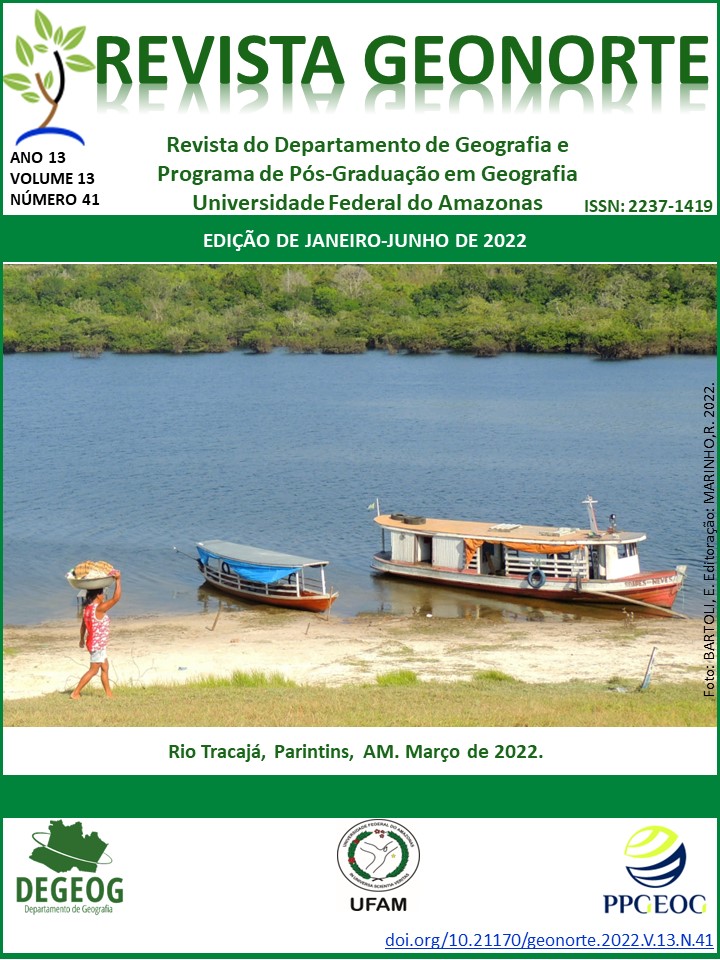Geoenvironmental compartmentation of the residual plateaus of the potiguar west extreme
DOI:
https://doi.org/10.21170/geonorte.2022.V.13.N.41.135.151Abstract
The landscape and physical environment can be visualized as a set of results of various physical, biological, anthropic alterations that happened in other eons. That way, this search had as purpose to perform the Geoenvironmental Compartmentation of the Residual Plateaus of the Potiguar West Extreme from a systemic analysis, because this area has significant importance for the countryside of the Rio Grande do Norte presenting the bigger altimetric elevation of the state. For this purpose, the present study is based on authors as Bertrand (1972), Sotchava (1997), Christofoletti (1999), beyond others that applied the geosystemic theory, as Rodriguez (2007) and Medeiros (2016). For the elaboration of the cartographic products, used the Software QGIS Lyon 2.14 with shapefile of CPRM (2010) and IBGE (2018), and data of TOPODATA Project, which were processed and clipped for the study area in the scale 1:350.000. In the field observations, the methodology used was the of Cavalcanti (2014), through the survey of 83 sample points distributed in the study area. The area studied contains three Geoenvironmental Units: Mountainous and Massive Alignments, Tablelands and Plateaus, and Planed Surfaces Retouched. It expects that this search subsidizes futures environmental and urban planning.
Downloads
Downloads
Published
How to Cite
Issue
Section
License
Autores que publicam nesta revista concordam com os seguintes termos:
- Autores mantém os direitos autorais e concedem à revista o direito de primeira publicação, com o trabalho simultaneamente licenciado sob a Licença Creative Commons Attribution que permite o compartilhamento do trabalho com reconhecimento da autoria e publicação inicial nesta revista.
- Autores têm autorização para assumir contratos adicionais separadamente, para distribuição não-exclusiva da versão do trabalho publicada nesta revista (ex.: publicar em repositório institucional ou como capítulo de livro), com reconhecimento de autoria e publicação inicial nesta revista.
- Autores têm permissão e são estimulados a publicar e distribuir seu trabalho online (ex.: em repositórios institucionais ou na sua página pessoal) a qualquer ponto antes ou durante o processo editorial, já que isso pode gerar alterações produtivas, bem como aumentar o impacto e a citação do trabalho publicado (Veja O Efeito do Acesso Livre).






